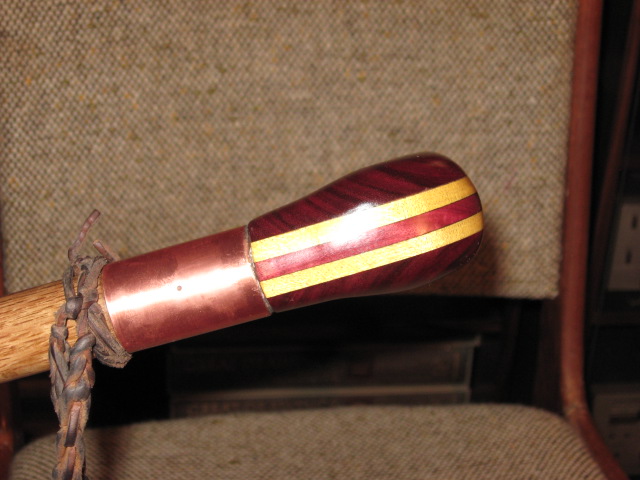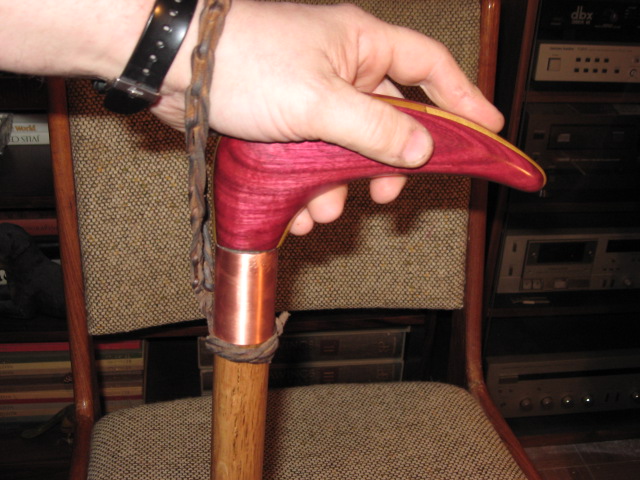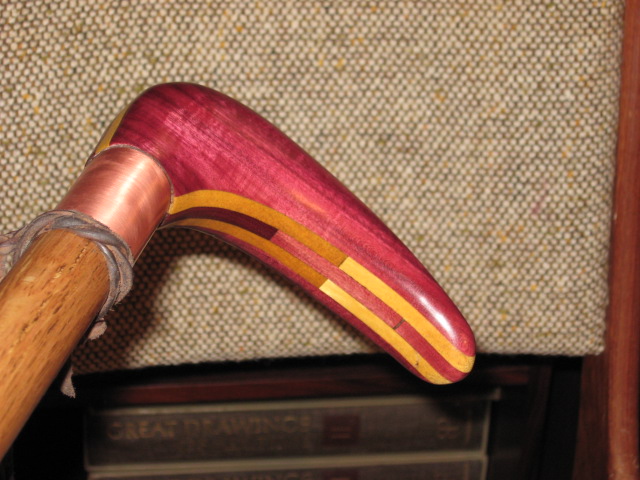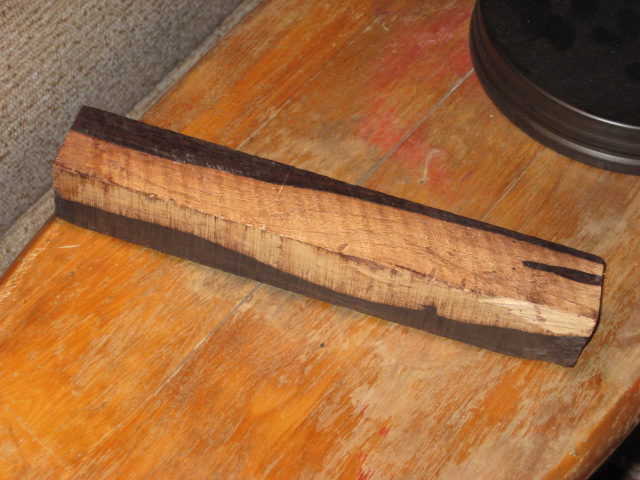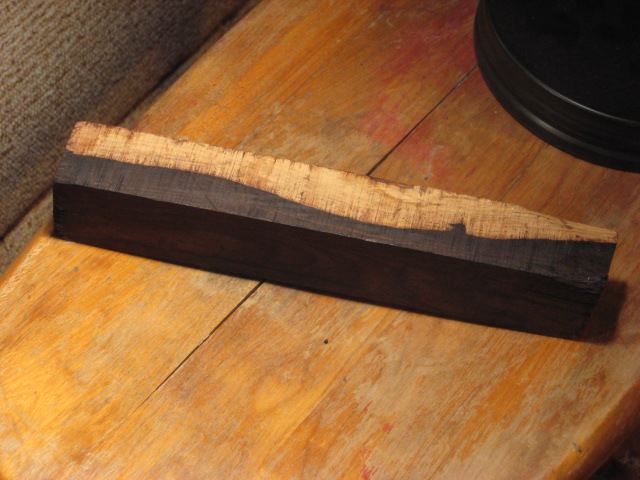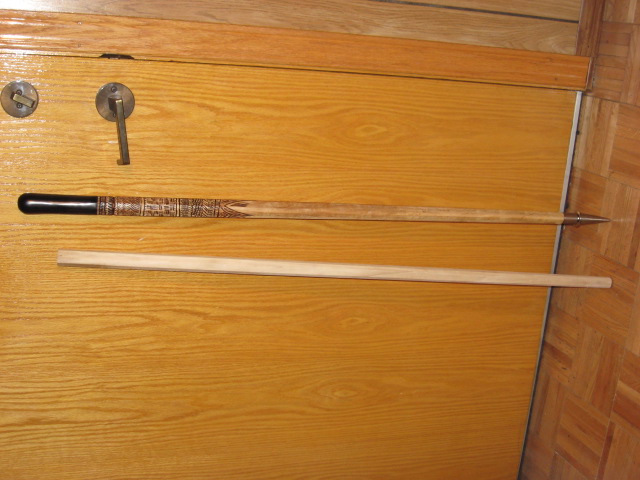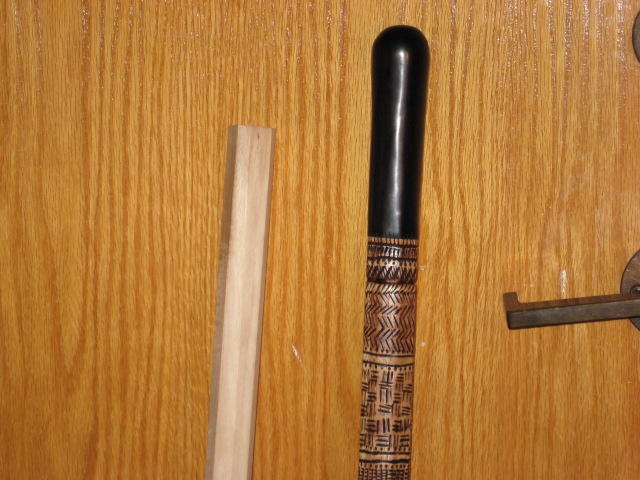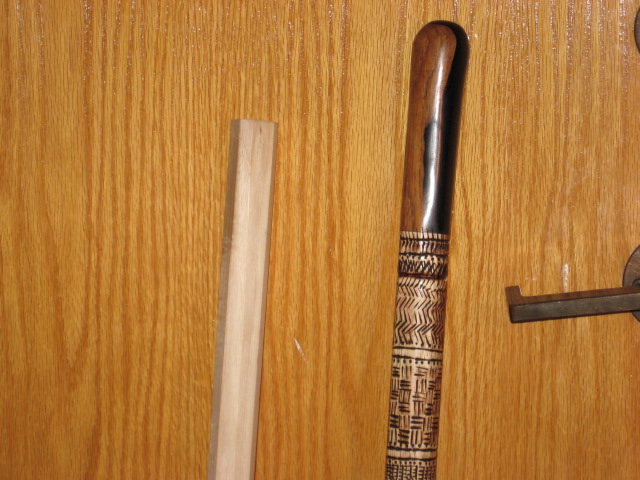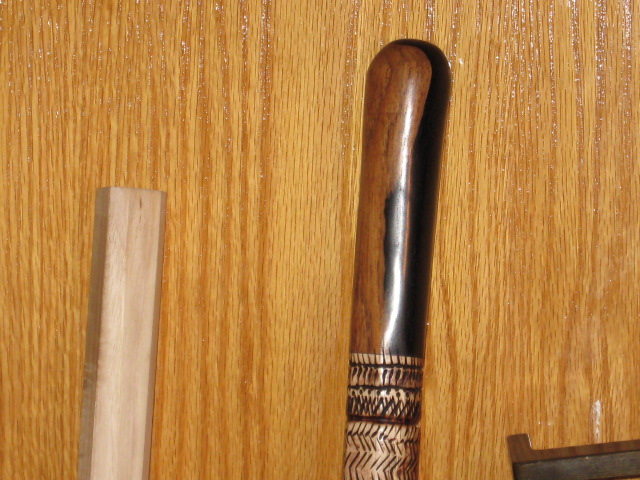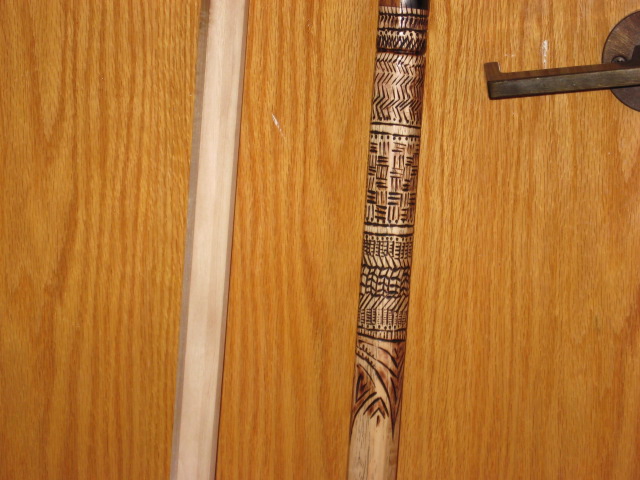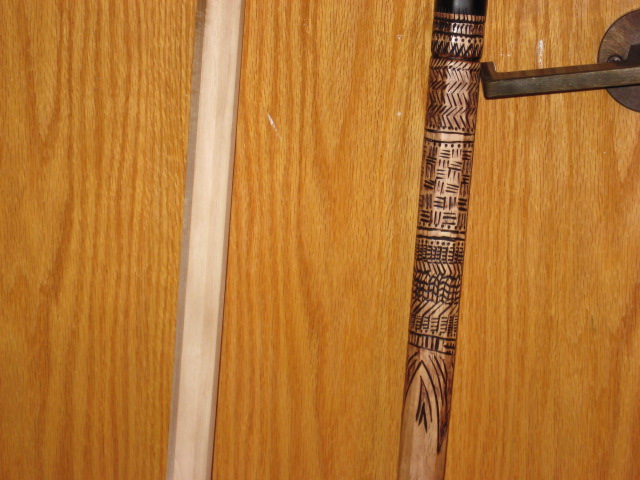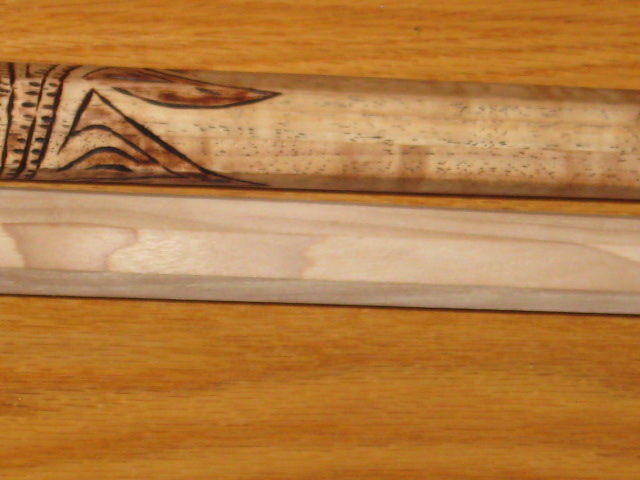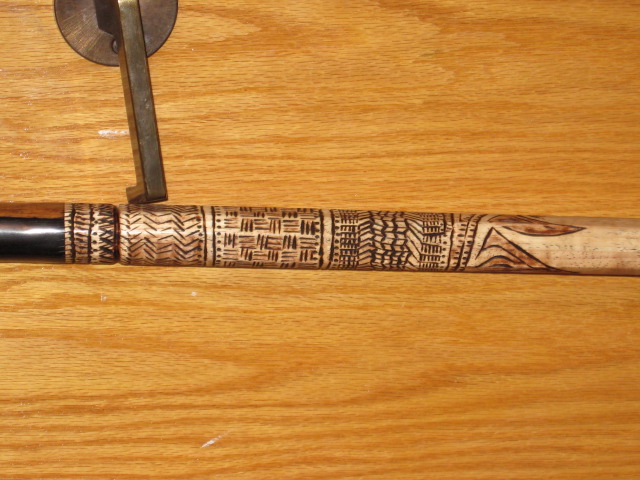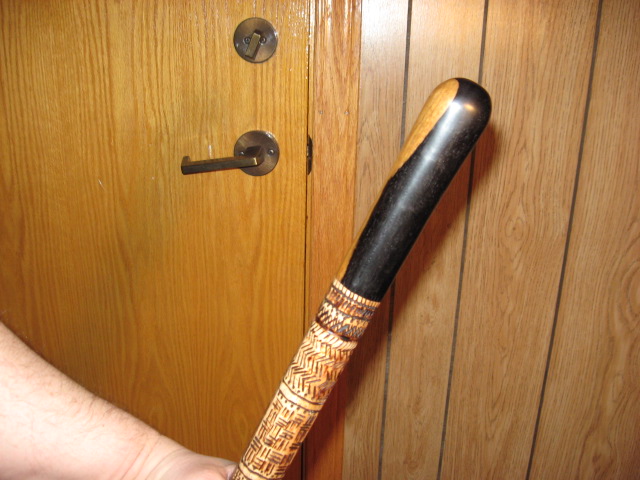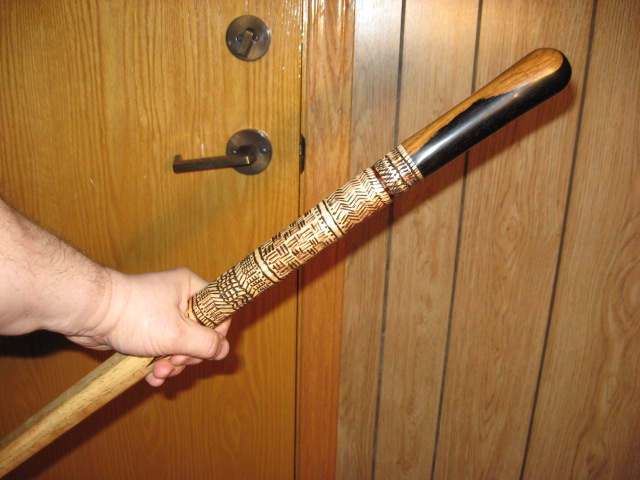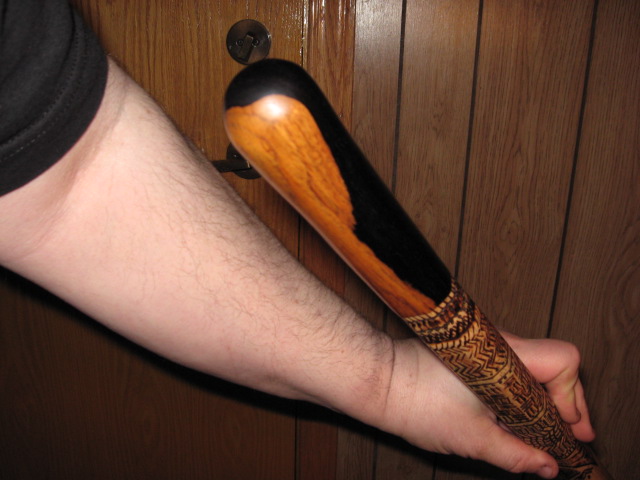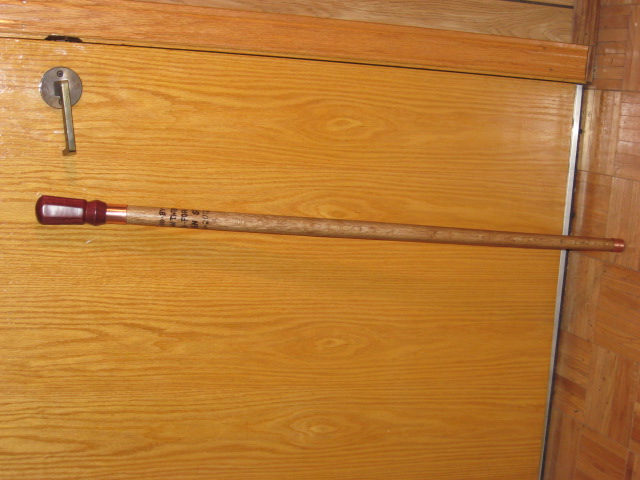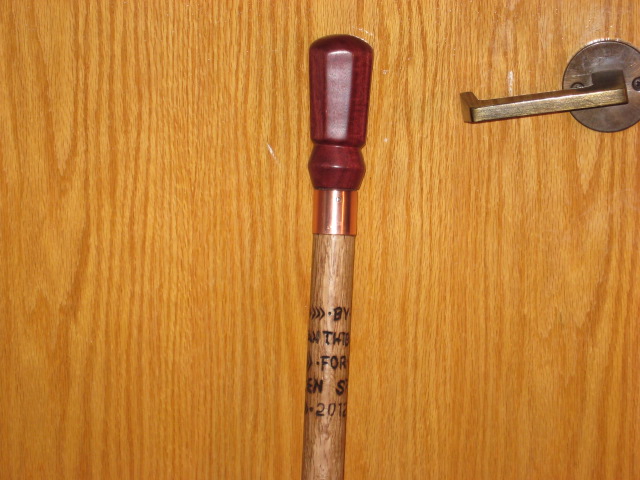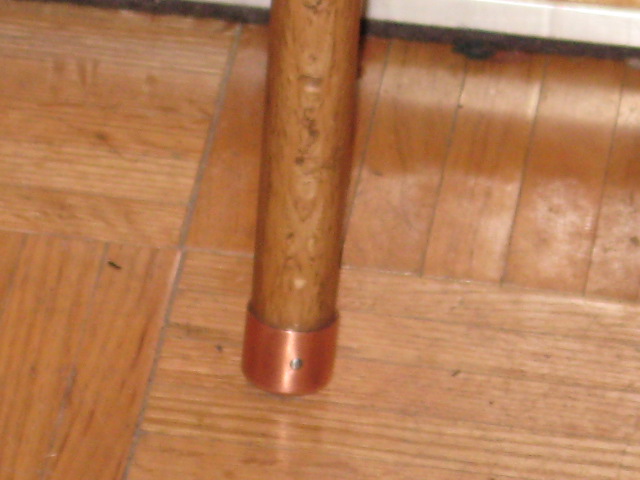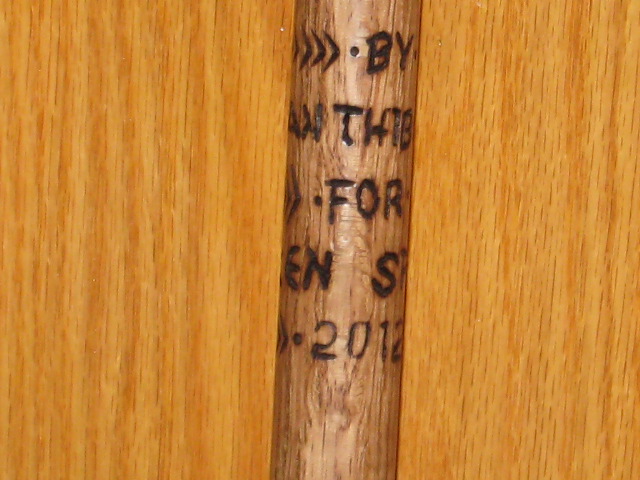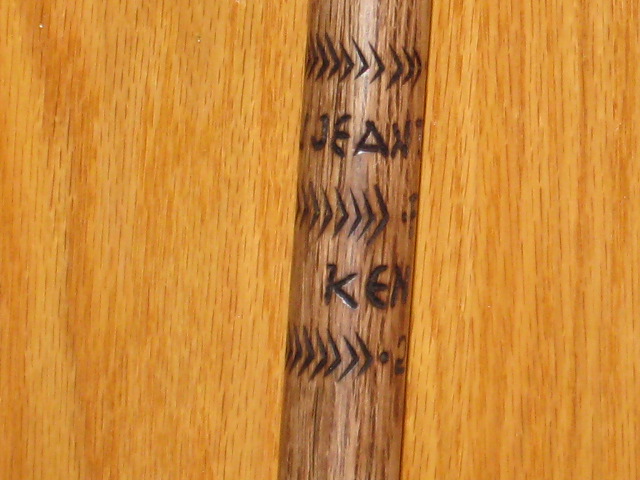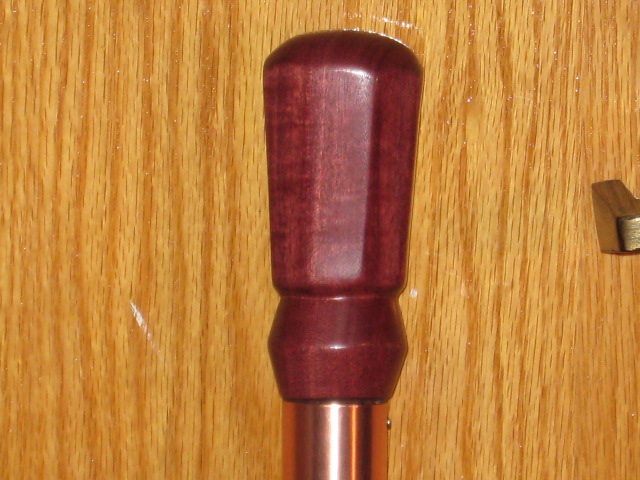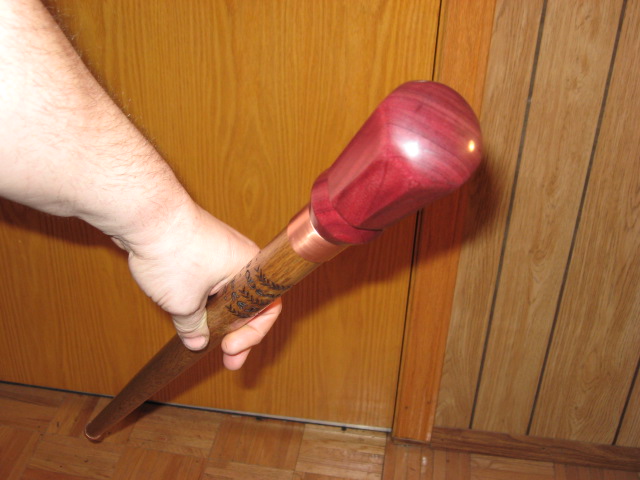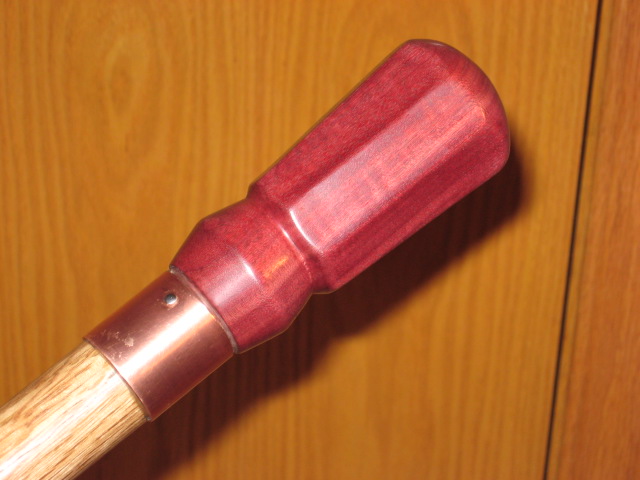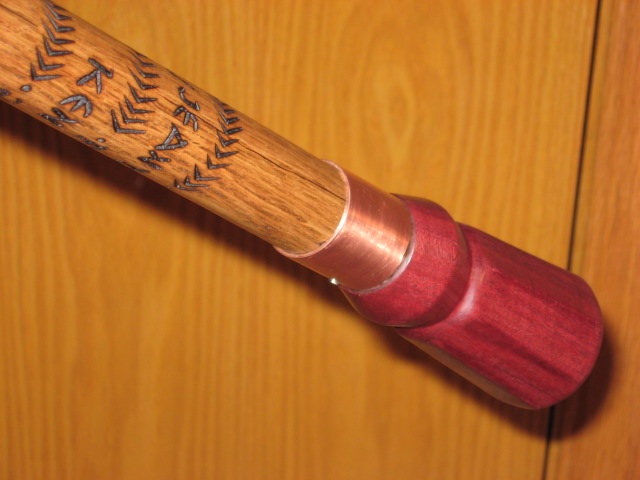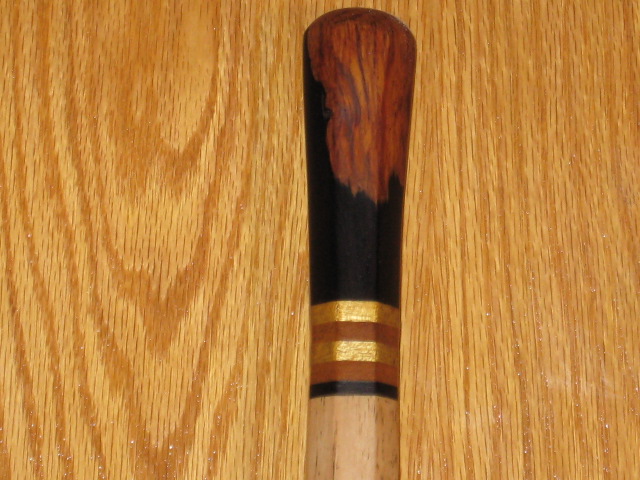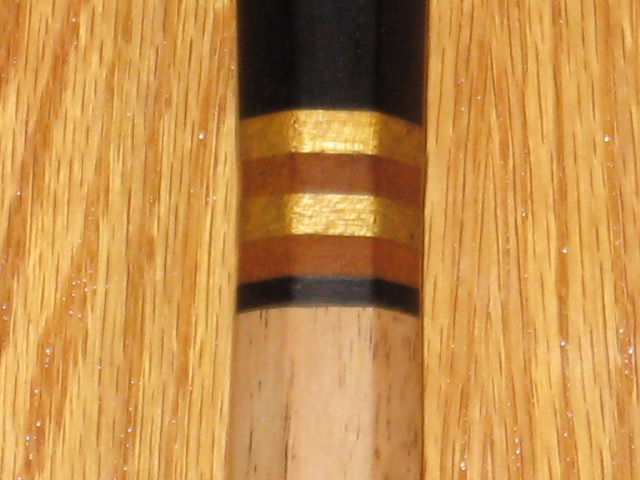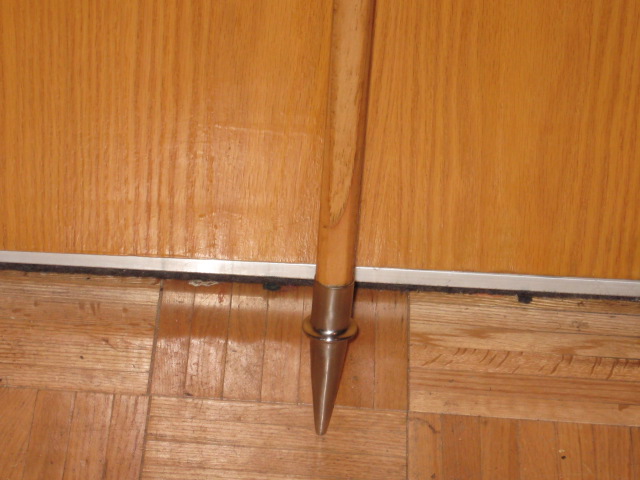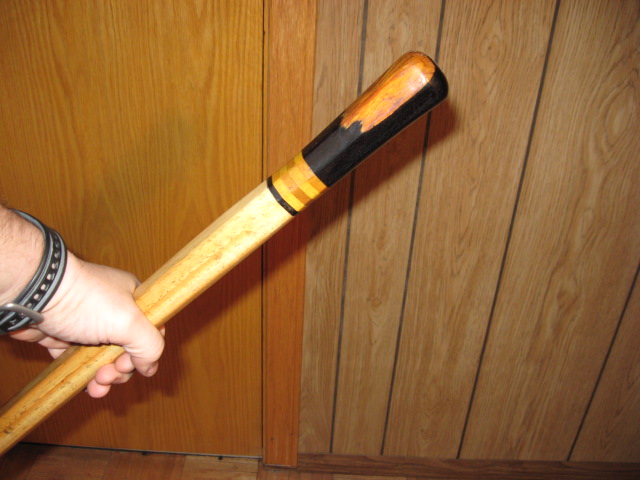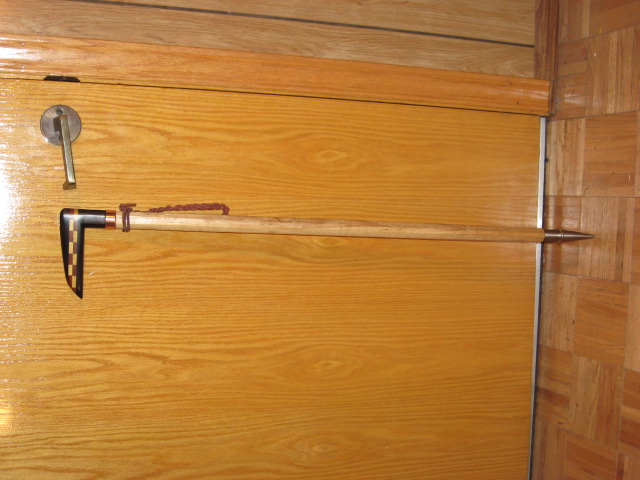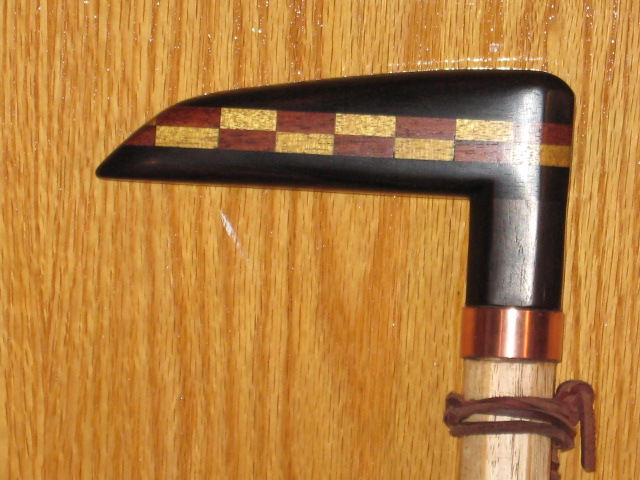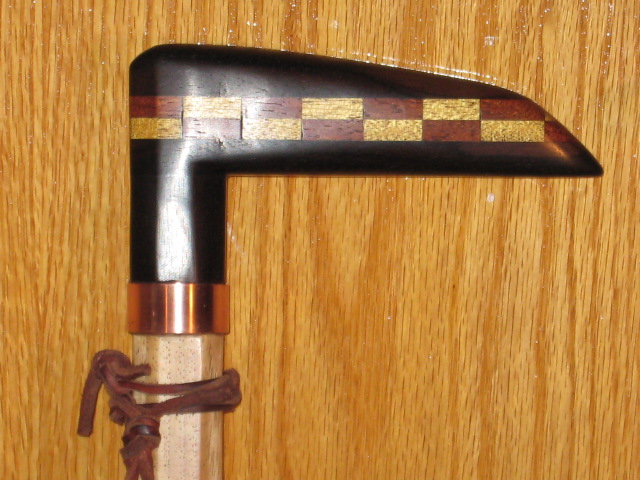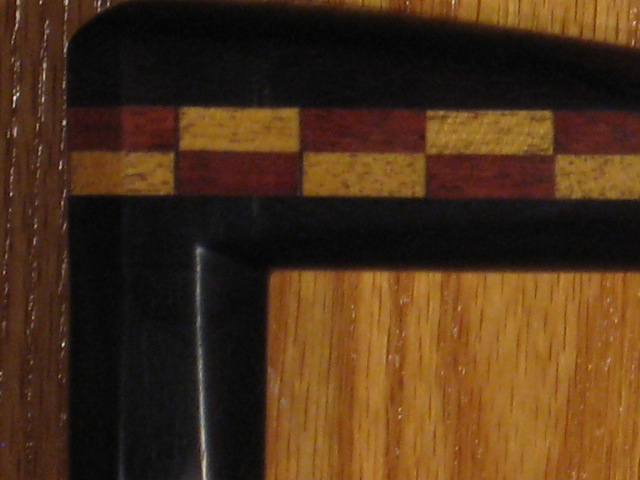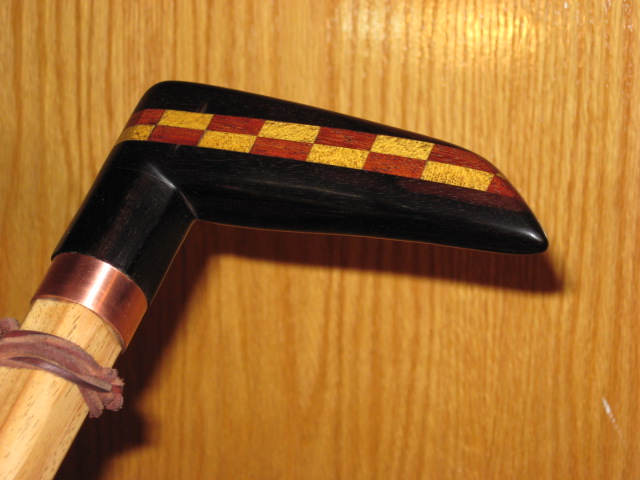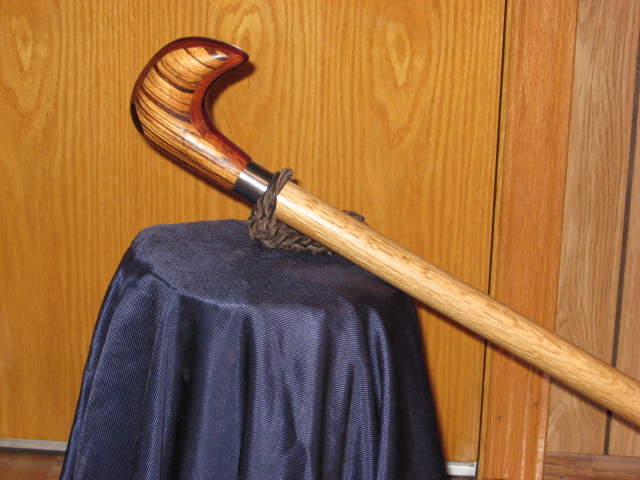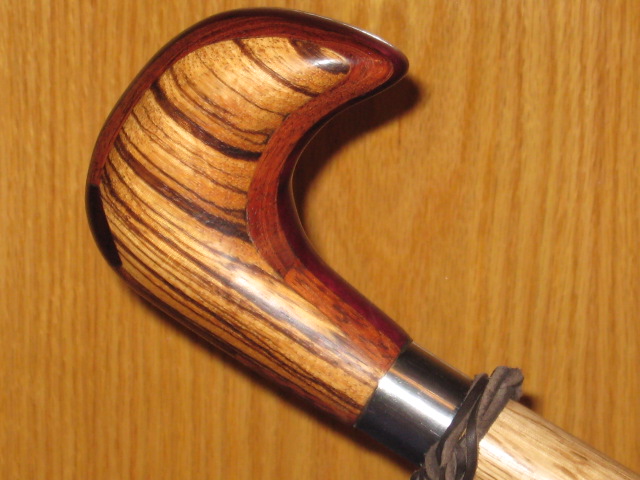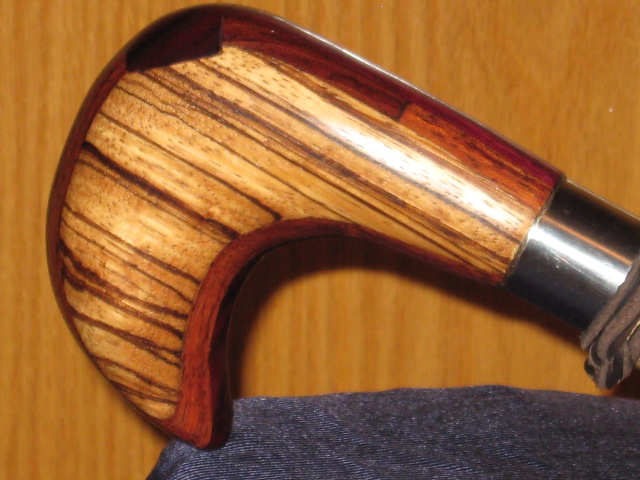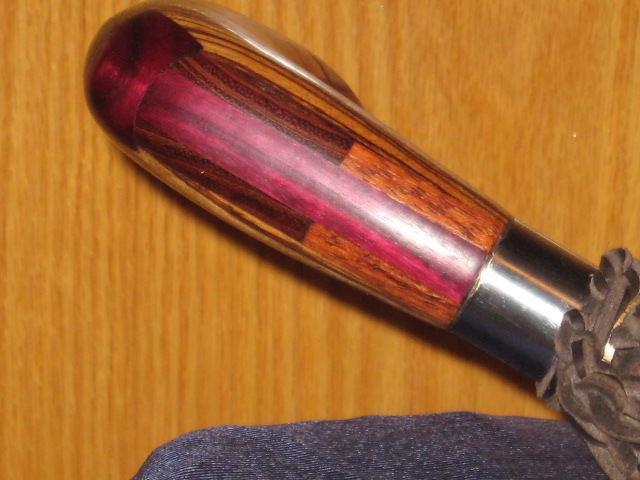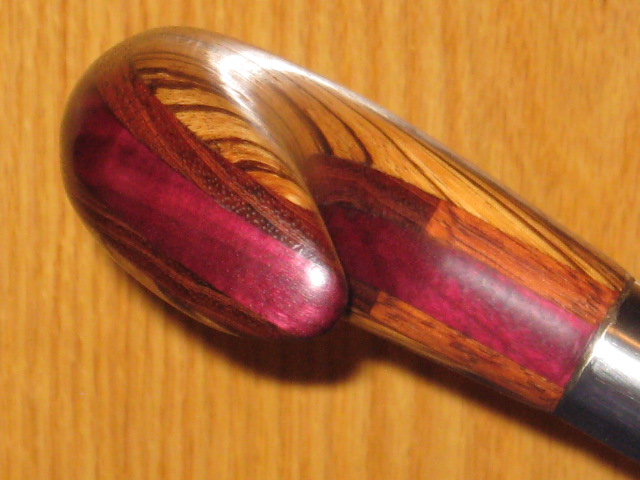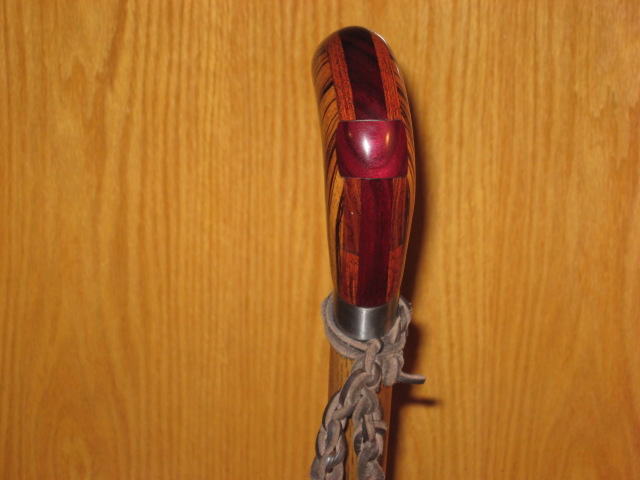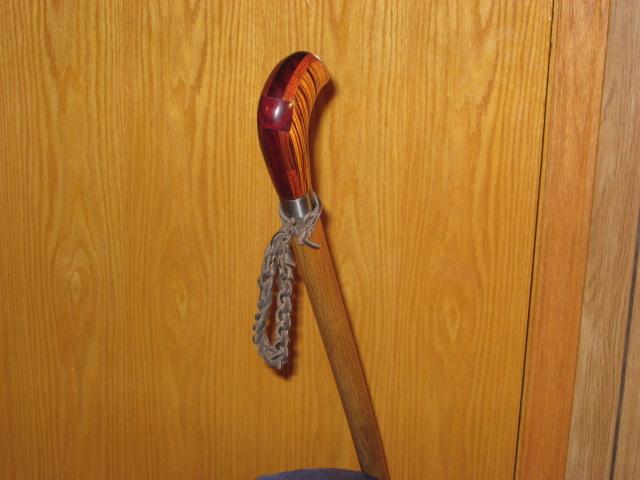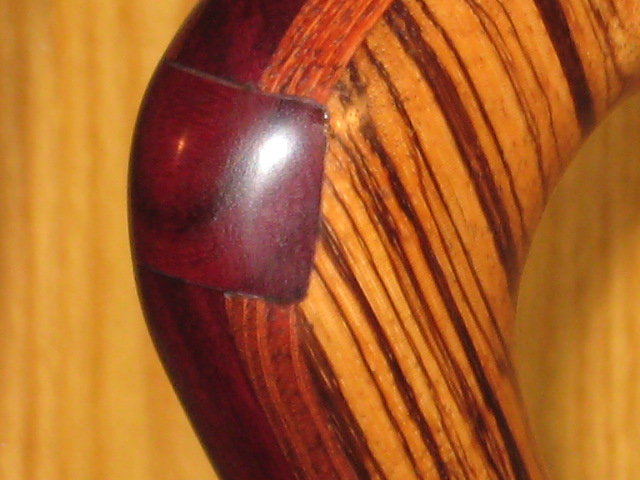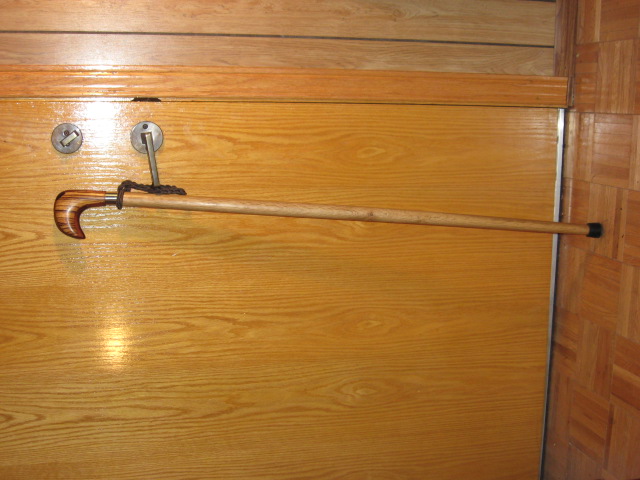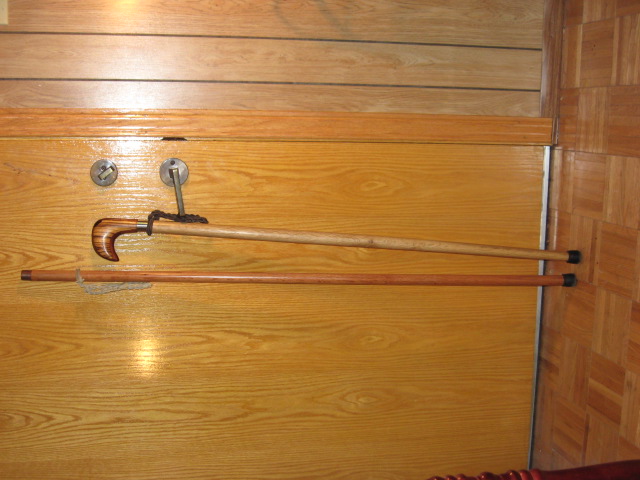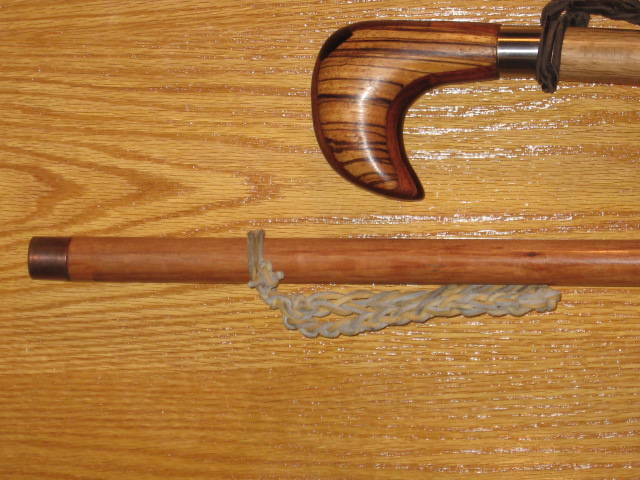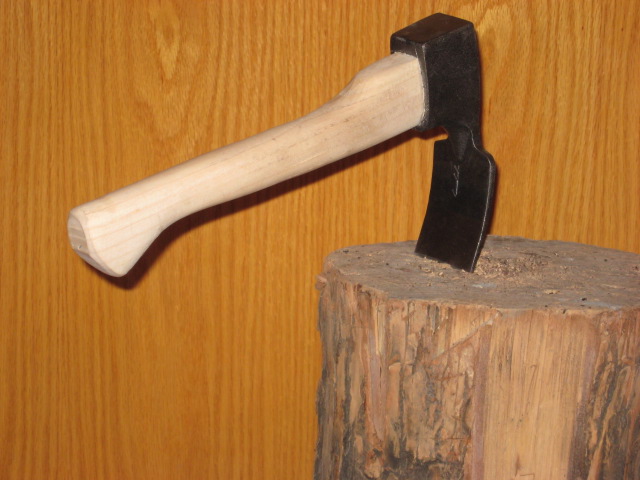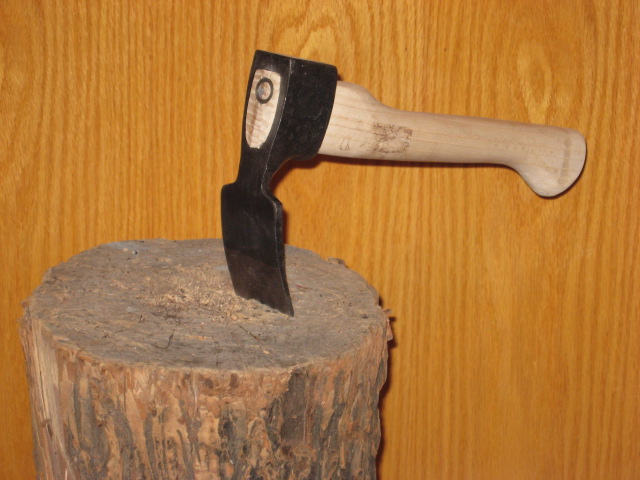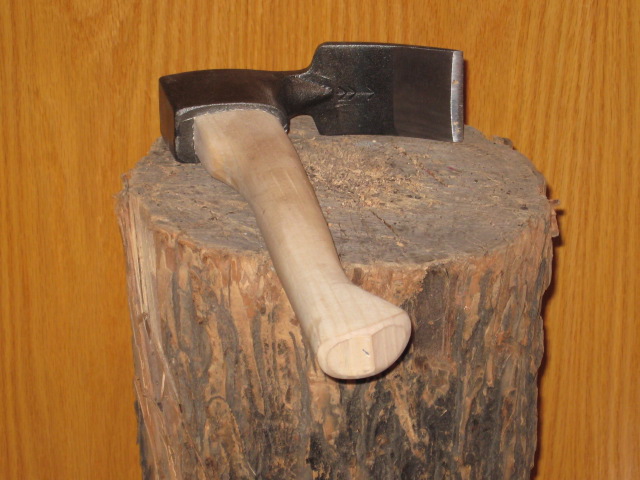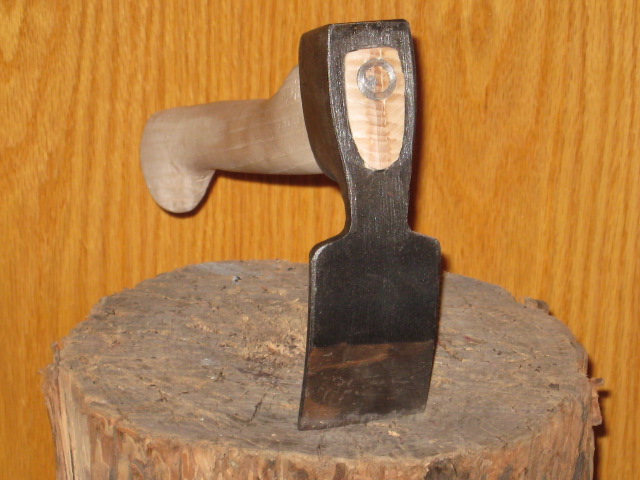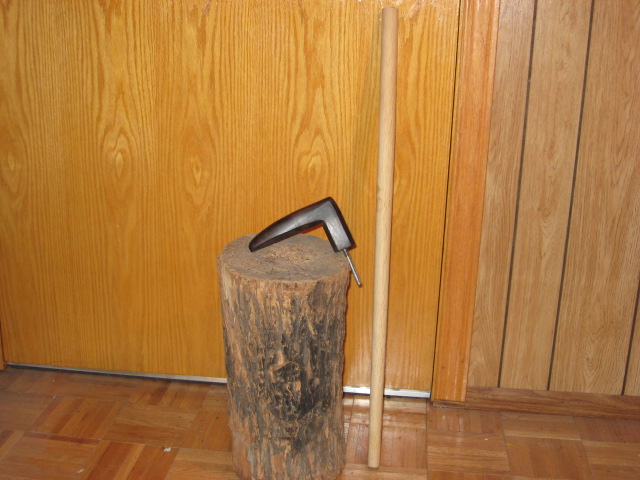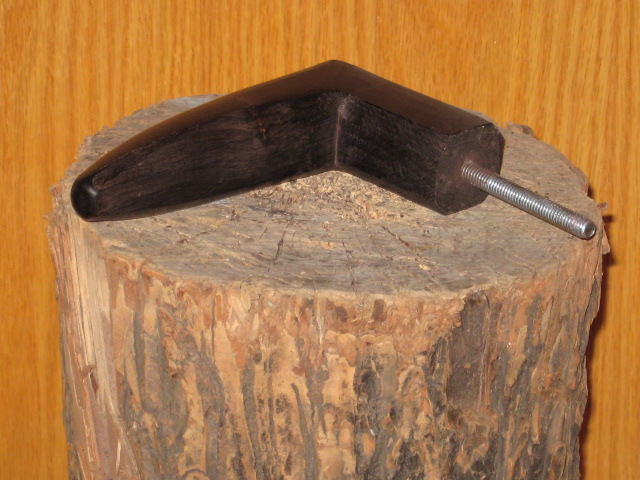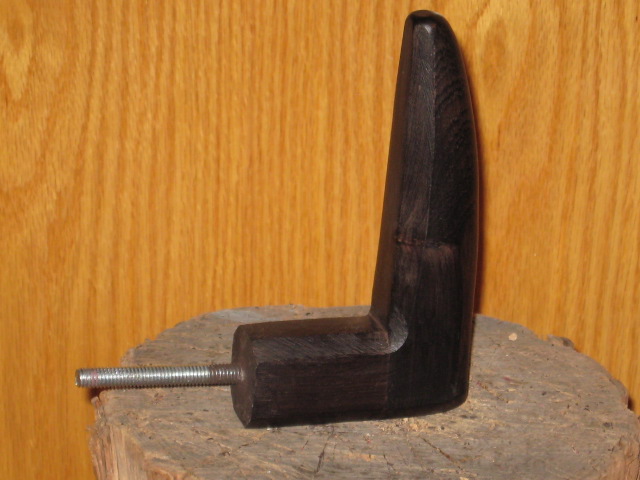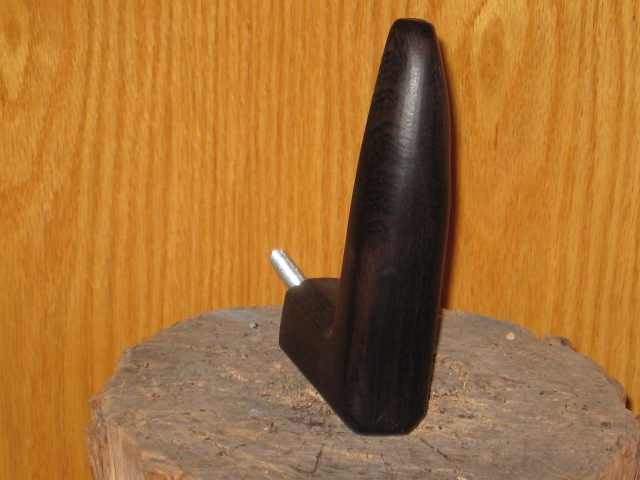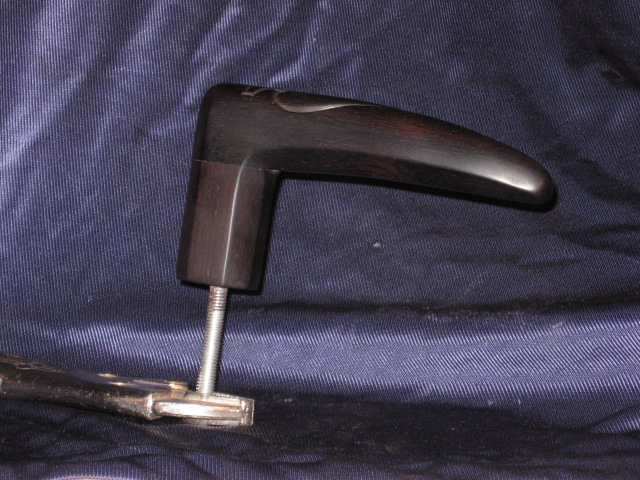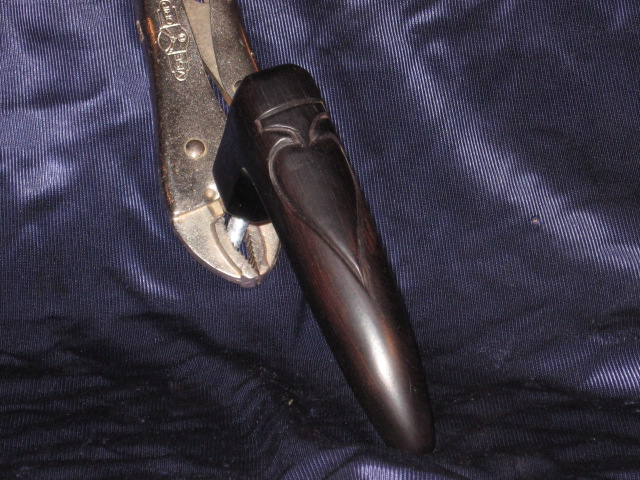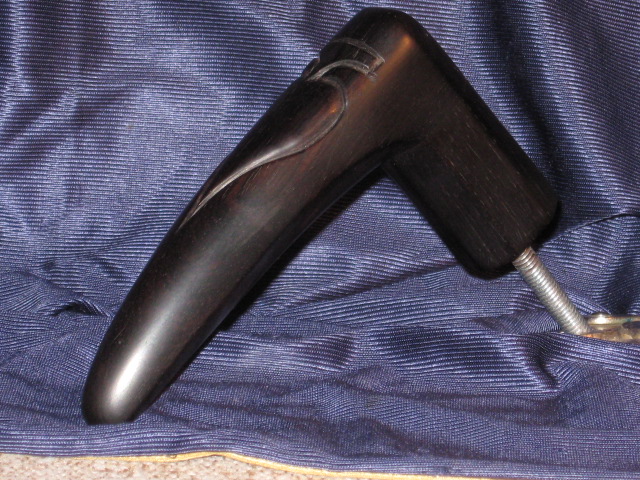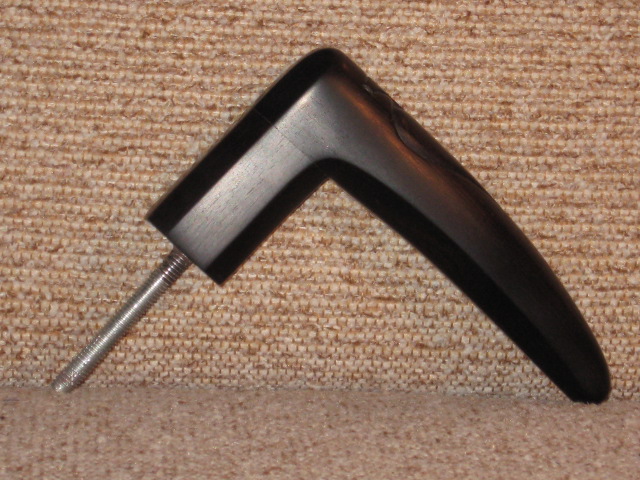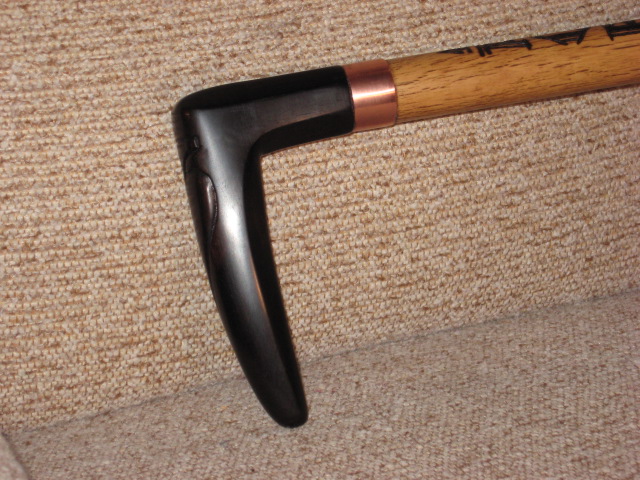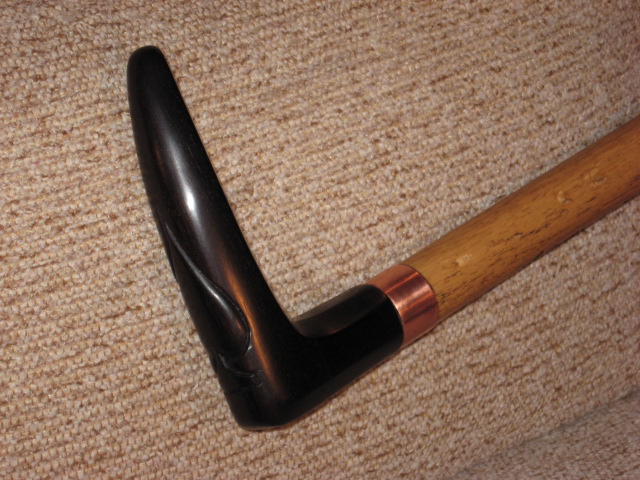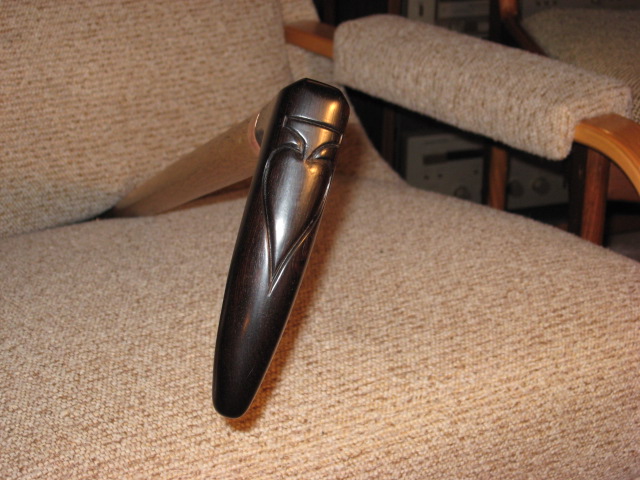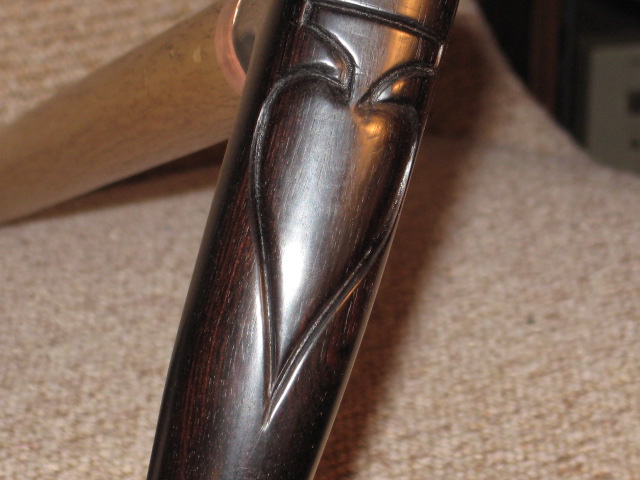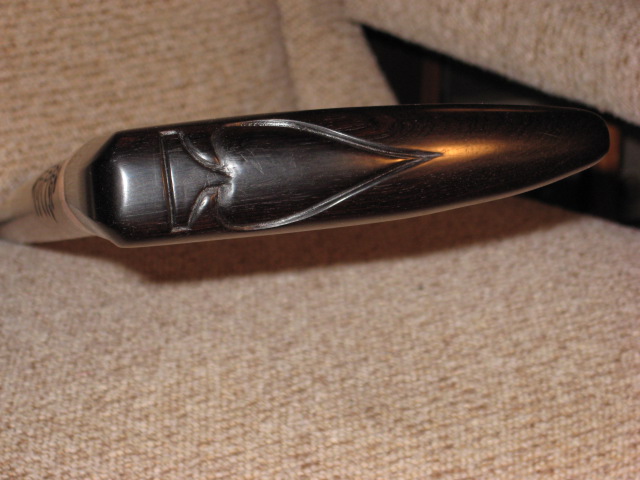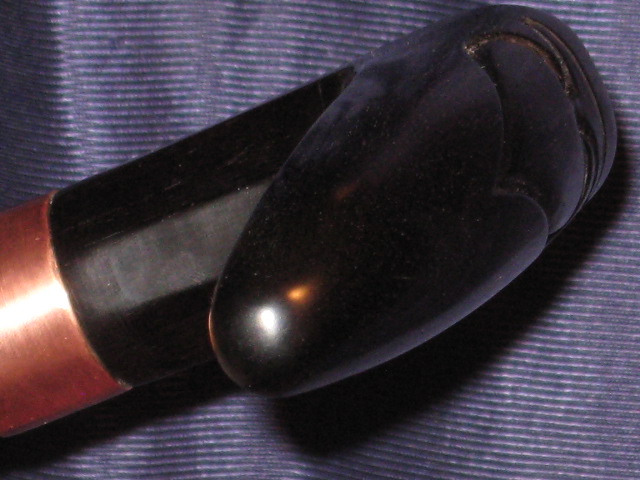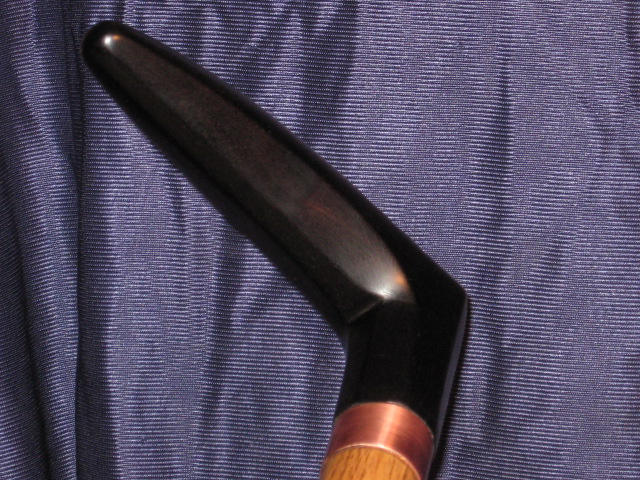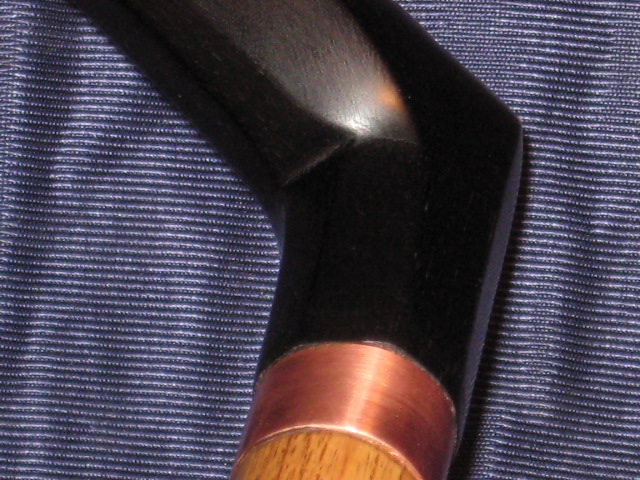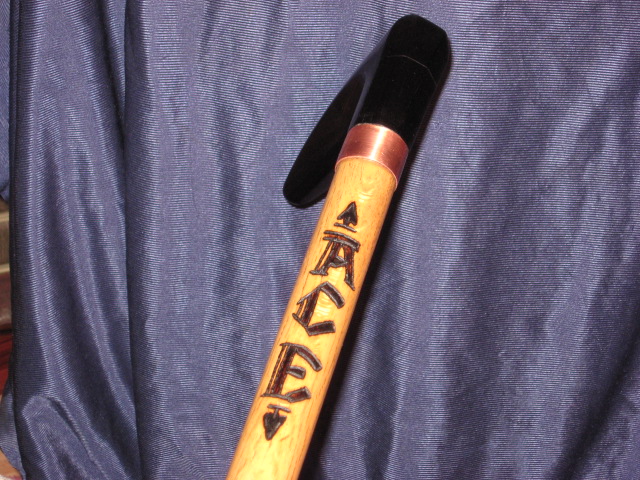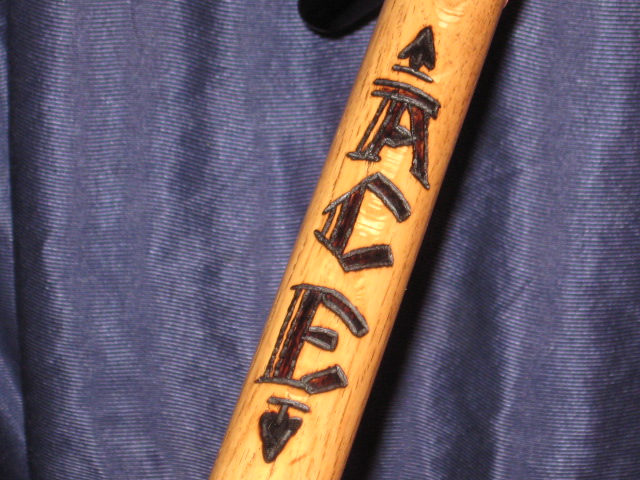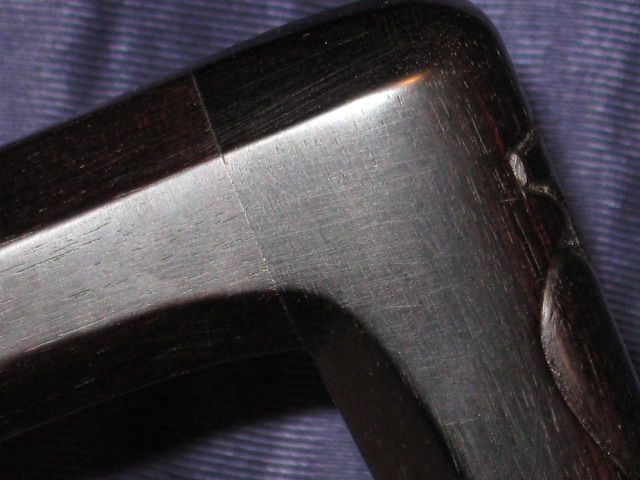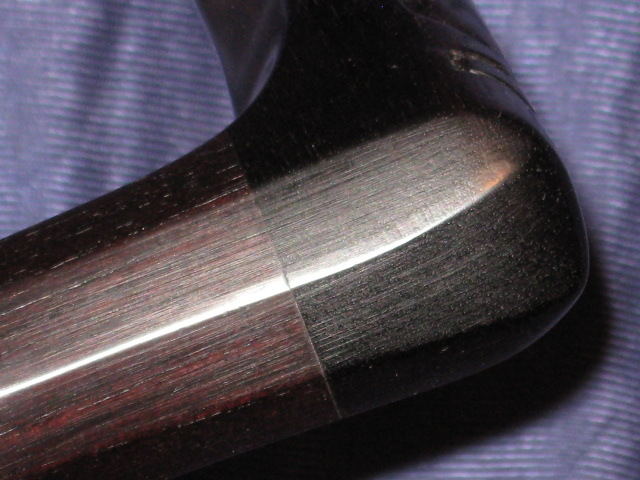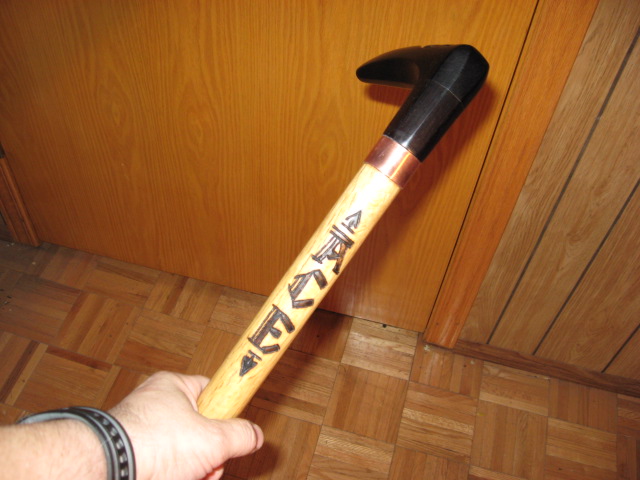When held by a handle the elbow should be just a little bit flexed for good support and to not become tiring to use.
With sticks and staffs one holds the piece on the shaft regardless of the handle shape or style: Although one can put a cane handle on a very long cane/stick it produces an awkward feel as the cane head tend to want to rotate in the hand as bit feeling like an axe held sideways as the closest comparison.
In very hilly terrain an over long stick with a cane head can be useful when going down hill, but then a regular long stick is very versatile as one can shift one's grip up and down on it fluidly.
I initially made this new one with a long shaft ( 42" ) but after a few days of city street use found it annoying and shortened it back down to cane length of 37" that seems to be the right length for me. ( Taller people = Taller cane and the reverse being true for shorter people ).
This one is lighter than my other sticks in not being as long or using Ebony which is very heavy in itself and not using a substantial brass or steel head: Weight 2 lbs 1.5 oz.
The handle is 6 1/4" long and 1 3/4" at it's thickest point.
White oak shaft, handle is a lamination of 1/4" Purpleheart in the centre with 1/4" Yellowheart on the next layer with the grain direction varied to maximize strength and also create a plywood reinforcement effect.
The outer sides are 1/2" thick Purpleheart. The whole thing glued using Titebond III and clamped together for 24 hours before being shaped with rasps, draw knife, abrasives and spokeshave like my previous sticks.
There is also a 1/4" threaded steel rod through the cane head and deep into the White Oak shaft. My usual use of a Windlass Butt Cap purchased from Kult of Athena.
One of the pics shows my preferred way to hold a cane handle which is reversed from the usual way one uses a cane: I just like this better and works with the wrist strap. ( Pic in next post )
I have some ideas for many different shapes for cane handles or stick " pommel like " tops using laminated woods in varying patterns that when carved should be interesting.
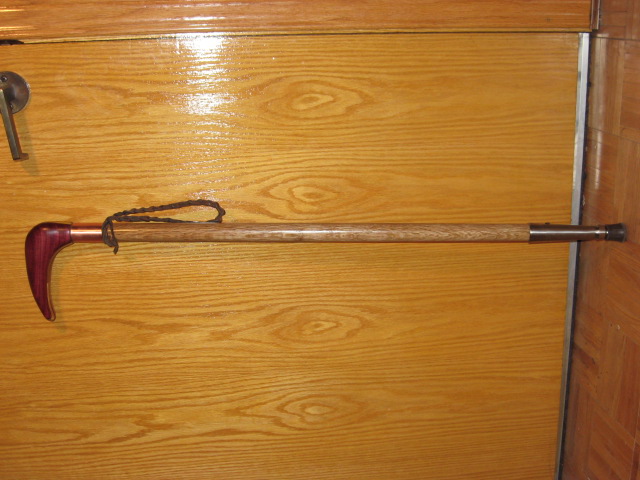
Wide shot.

Medium close up.
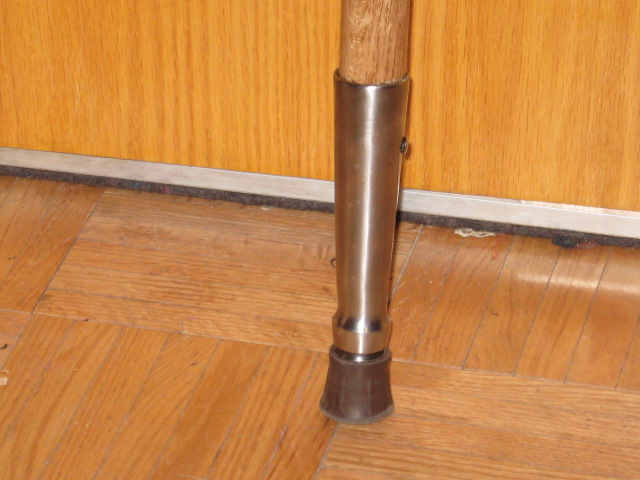
Buttcap + rubber tip.
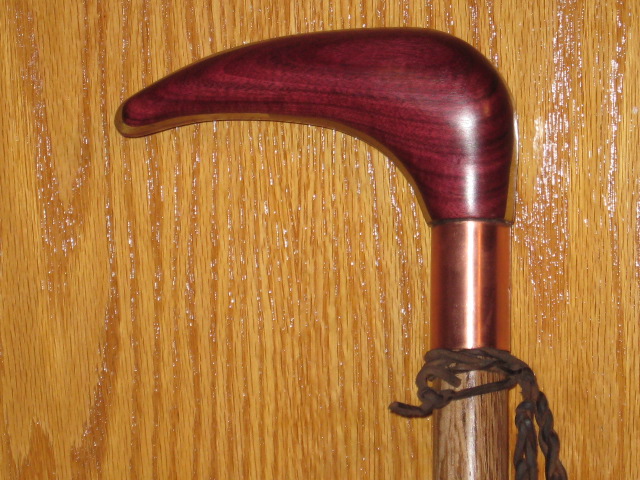
Close up.
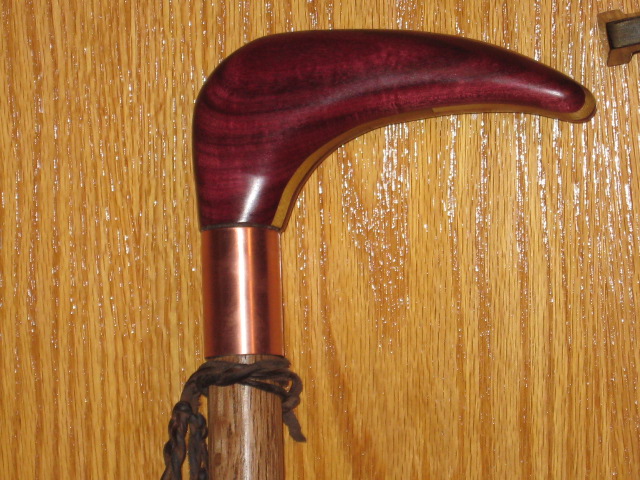
Close up other side.
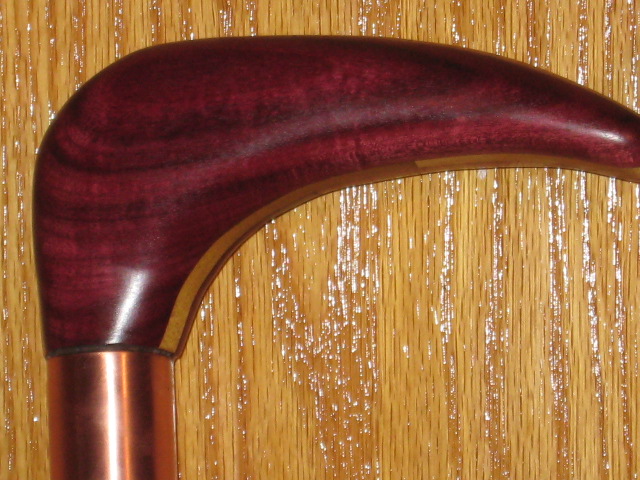
Extreme close up: The grain of the Purpleheart looks even better in real life.
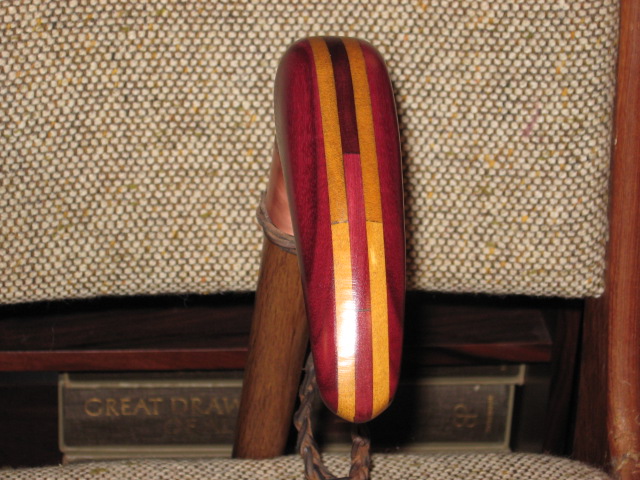
Top at a slight angle showing the laminations: The same wood looks darked on end grain.

Underside of handle.


